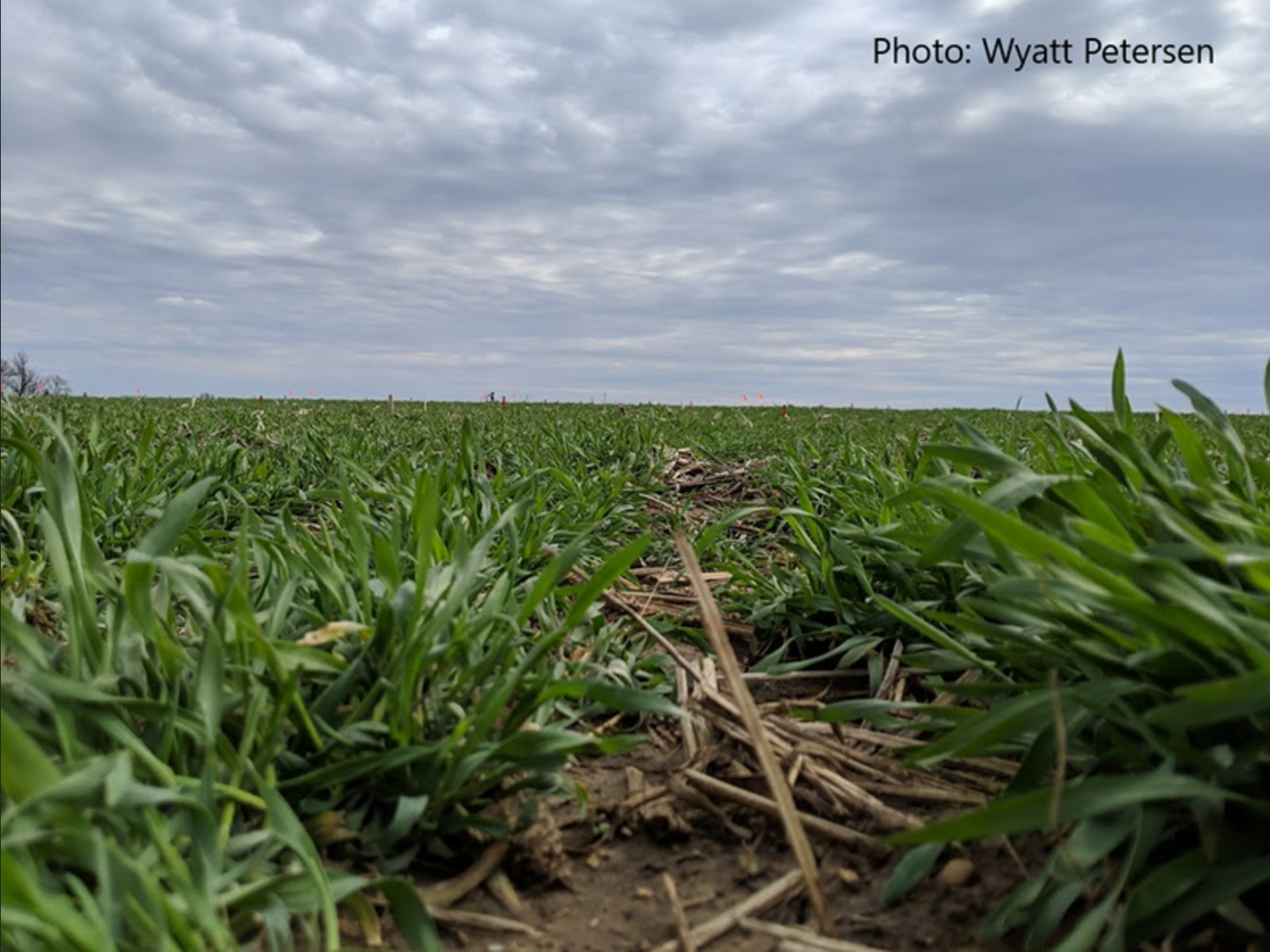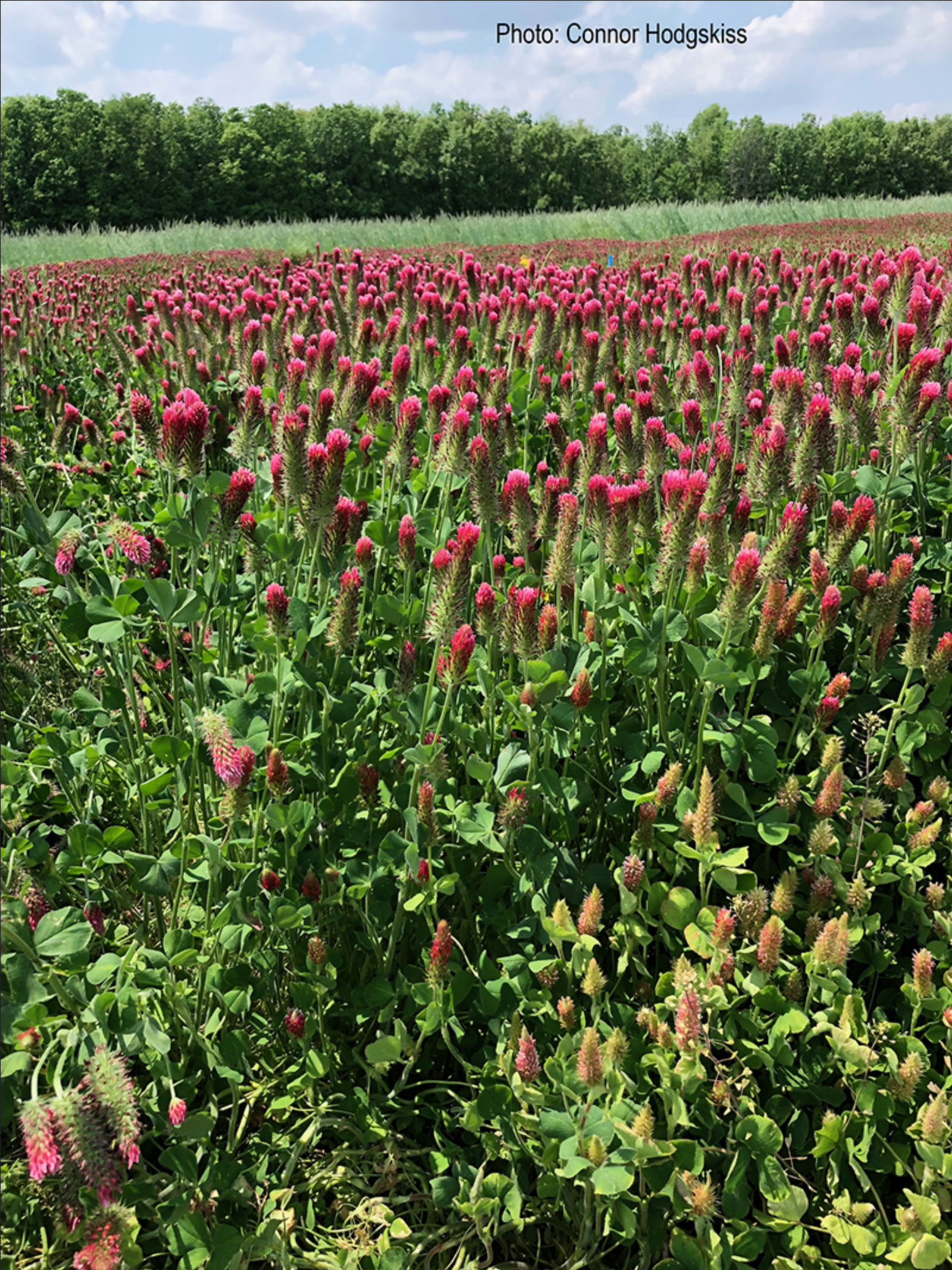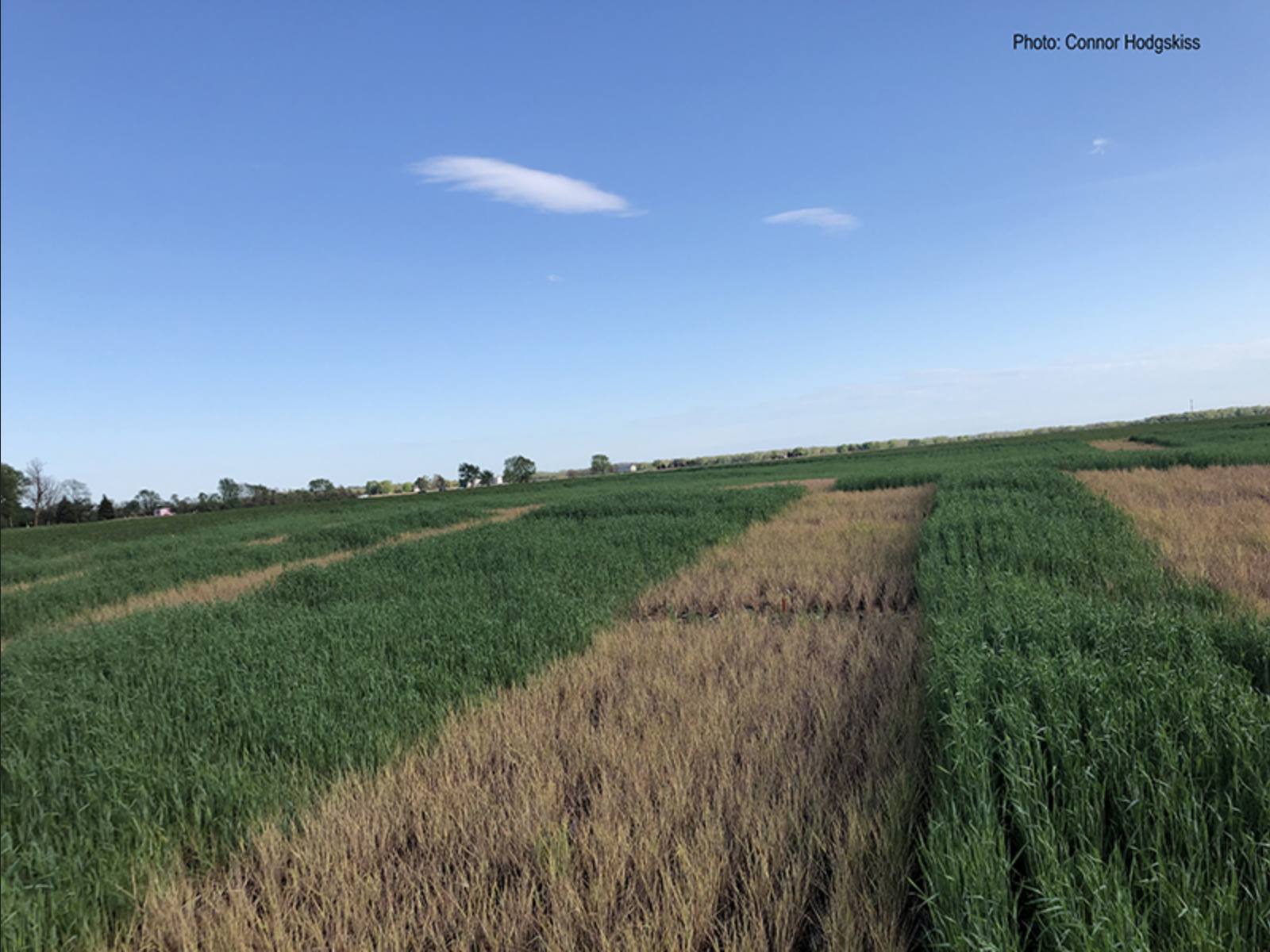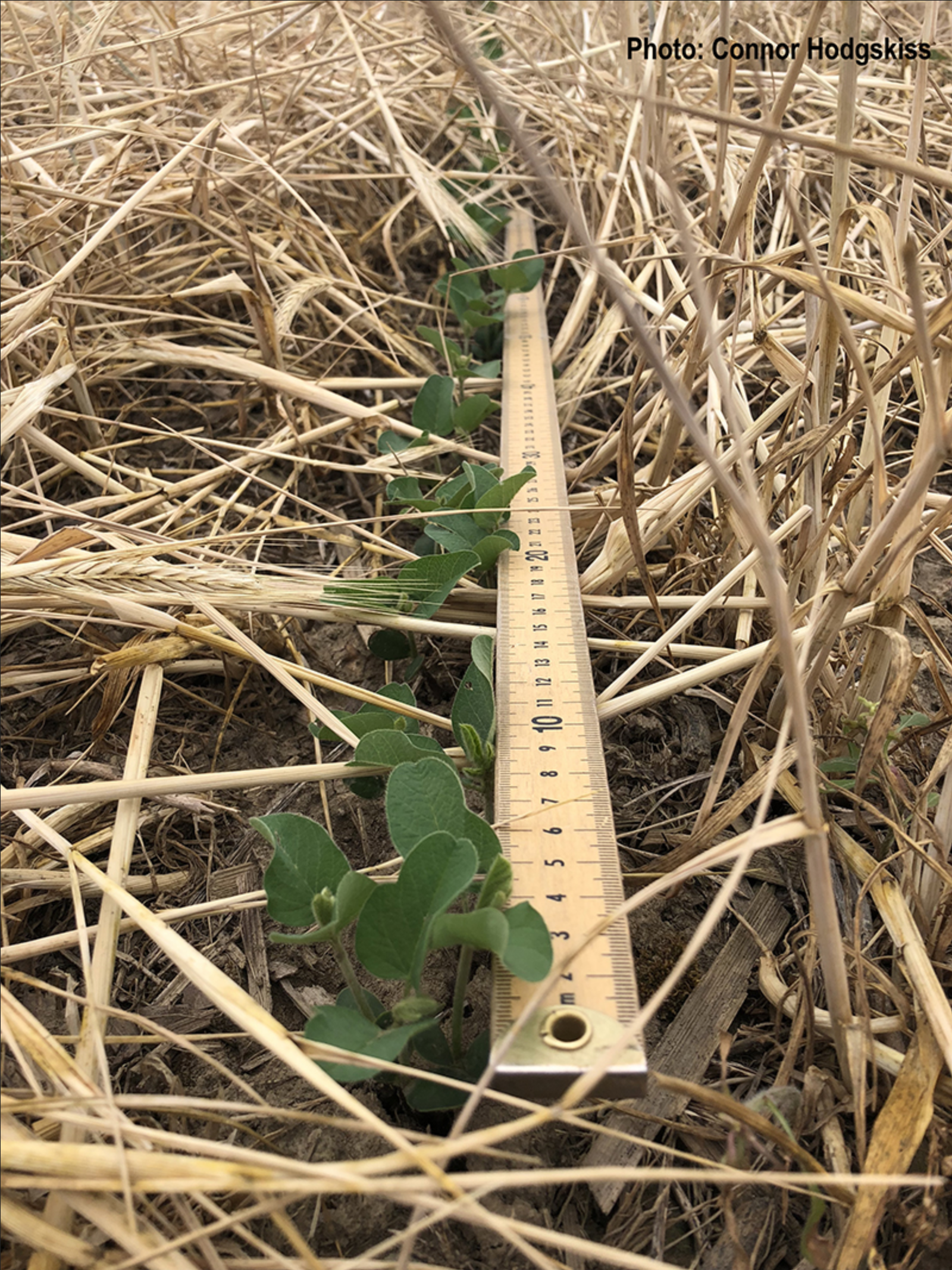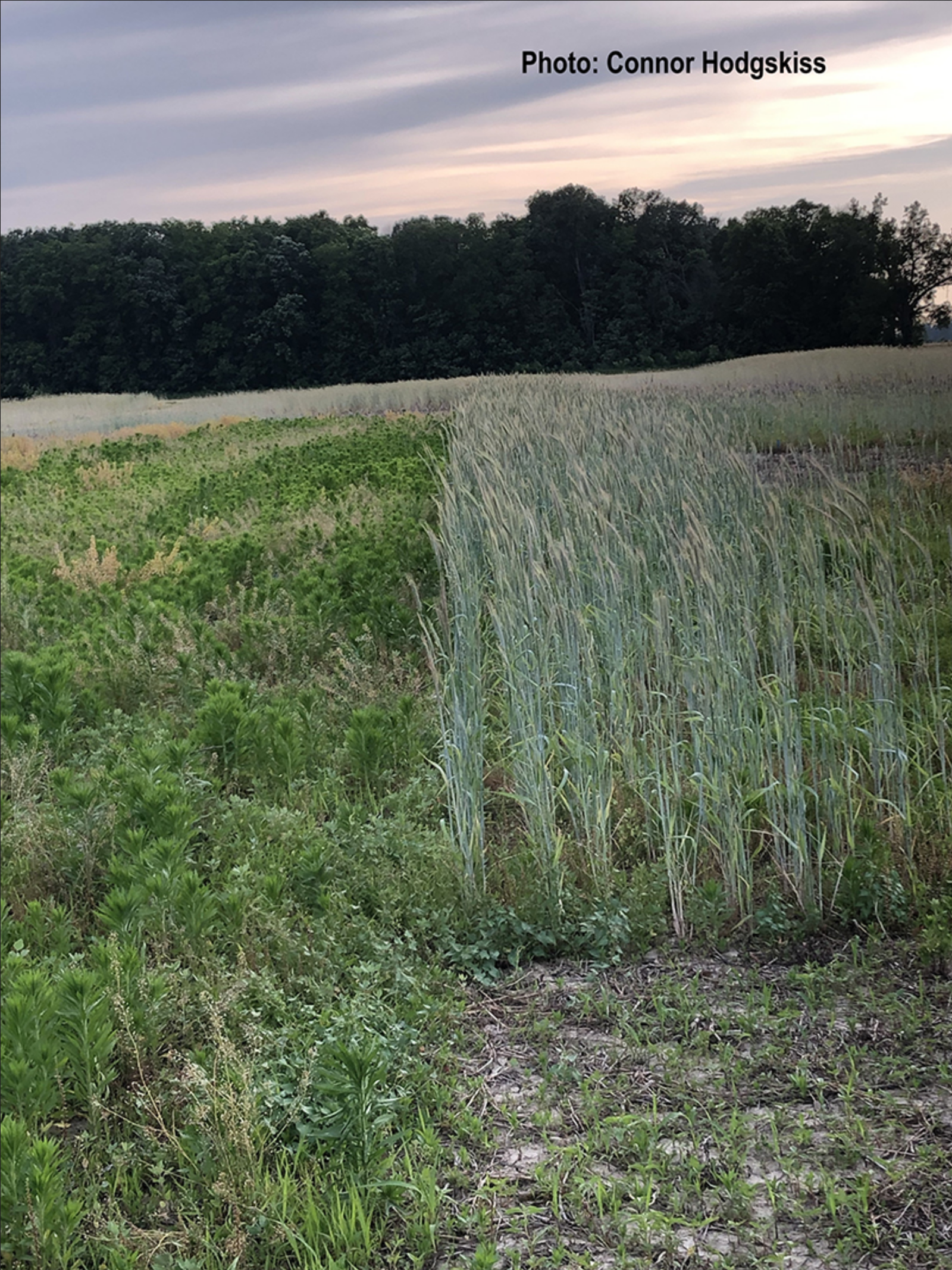picture of the week
October 25, 2021
Cover Crops & Integrated Weed Management
Marcelo Zimmer, Weed Science Program Specialist
Department of Botany and Plant Pathology, Purdue University
The use of cover crops in Indiana has increased in the last few years, reaching more than 1 million acres planted in 2018. The increased adoption is due to the soil health benefits this system provides combined with government sponsored cost share programs. Soil health benefits of cover crops include erosion control, increased soil organic matter, nutrient cycling, improved soil physical properties, and surface water quality. Additionally, many farmers planted cover crops this growing season on prevent planting acres to protect the soil and suppress weeds throughout the summer in fields where cash crops could not be planted.
Click image to enlarge
Several plant species may be used as cover crops, including cereal rye (Secale cereale L.) (Figure 1), crimson clover (Trifolium incarnatum L.) (Figure 2), canola (Brassica napusL.) (Figure 3), and many others. However, from a weed science perspective, there are a few considerations to make when implementing cover crops:
- Seed availability and quality: Select cover crop seeds with good germination and vigor to ensure good stand establishment. A good cover crop stand is crucial for weed suppression. Additionally, make sure that the seed source used is free of weed seeds. Tough to control and/or herbicide-resistant weeds may be introduced to a field through contaminated seed sources. On the same note, all weedy Amaranthusspecies (Palmer amaranth, waterhemp, redroot pigweed, etc.) were added to the Indiana noxious-weed seed list as of October 18th, 2019, except for edible or ornamental Amaranthus species.
- Weed pressure: Use grass species as cover crops if your field is heavily infested with broadleaf weeds such as horseweed (marestail), giant ragweed, or waterhemp to allow the use of broadleaf herbicides (synthetic auxins) to manage weeds.
- Herbicide carryover: Consider the potential for herbicide carryover issues caused by residual herbicides applied during the summer that may hinder cover crop establishment in the fall, especially for brassica and legume cover crops. Cereal rye is generally more tolerant than other cover crops in regards to herbicide carryover.
- Termination strategy: Adjust your cover crop termination strategy (herbicide program) according to farm equipment available, cover crop species to be planted, cash crop to be planted in the next growing season, and herbicide-resistant traits available for the cash crop. Ideally, cover crops should be terminated before or at planting (Figure 4 and 5). However, some farmers prefer to terminate cover crops after cash crop planting (planting green) to allow for more biomass accumulation and facilitate planting operations. Terminating cover crops after planting the cash crop is risky due to reduced herbicide options and potential competition between the cover crop and the cash crop, especially if weather conditions delay termination (Figure 6).
Cover crops can be a great tool in an integrated weed management system by reducing the density and size of problematic weeds (Figures 7 and 8). However, cover crops should not be used as the only weed control strategy, especially if tough to control and/or herbicide-resistant weeds are present in that particular field (you can't hug a weed to death). Combining residual herbicides, cover crops, effective postemergence (POST) herbicides, and field scouting is the ideal strategy to provide soil health benefits and manage weeds properly (Figure 9).
References
Johnson B, Legleiter T (2015) Residual Herbicides and Fall Cover Crop Establishment. Purdue Extension. Available at https://ag.purdue.edu/btny/weedscience/Documents/covercropcarryover.pdf
Kladivko E, Armstrong S, Morrow A (2019) Post Soybean, Going to Corn: Use Oats/Radish. Indiana Cover Crop Recipe. Purdue Extension. MCCC-101. Available at http://mccc.msu.edu/wp-content/uploads/2019/10/MCCC-101-IN-post-soybean.pdf
Kladivko E, Armstrong S, Morrow A (2019) Post Corn, Going to Soybean: Use Cereal Rye. Indiana Cover Crop Recipe. Purdue Extension. MCCC-100. Available at http://mccc.msu.edu/wp-content/uploads/2019/10/MCCC-100-IN-post-corn.pdf
MCCC (2019) Cover Crop Considerations for Prevented Planting. Available at http://mccc.msu.edu/wp-content/uploads/2019/06/2019_MCCC_Cover-Crop-Considerations-for-Prevented-Planting.pdf
NRCS (2019) Planting Commodity Crops into Green Cover Crops. Indiana Bulletin No. 180-19-02. Available at https://extension.entm.purdue.edu/newsletters/pestandcrop/wp-content/uploads/sites/2/2019/05/IB-180-19-02-Planting-Green.pdf


